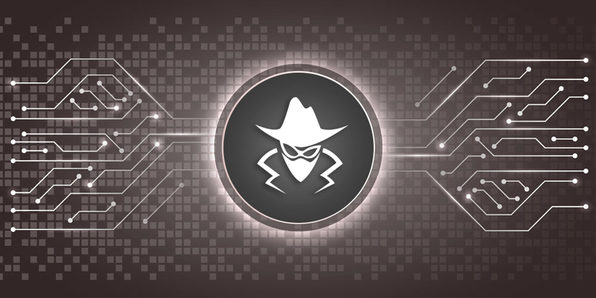This plan includes
- Instant access to 11,000+ online courses
- Play & Pause Course Videos
 HD Video Recorded Lectures
HD Video Recorded Lectures- Learn on Mobile/PC/Tablet
- Quizzes and Real Projects
- Lifetime Course Certificate
- Instructor Chat Support
- Cancel Plan Anytime
What you'll learn?
- Includes 2 Bonus Practice Exams. We have added a CompTIA PenTest+ Practice Test and a Certified Ethical Hacker CEH Practice Test.
- How to plan and scope a penetration test as a contracted pen tester for a client (as an ethical hacker, you’ll be the good guy and get paid to hack networks!)
- How to work within a virtual environment to practice your pen testing skills, including using Oracle VM manager, Kali Linux, Metasploitable, and DVWA
- Where to find vulnerabilities and how to penetrate a network in order to run exploits, then how to report those vulnerabilities to the client for remediation
- How to gather intel on a network by scanning and enumerating (finding) targets, then searching out the weak points on those targets
- How to conduct social engineering attacks, exploit network-based vulnerabilities, and intercept traffic via man-in-the-middle (MITM) attacks on wired and wireless network
- How to use pen testing tools like Nmap, Nessus, Nslookup, John the Ripper, Immunity Debugger, Aircrack-NG, Wireshark, and many more
- How to write reports, explain post-delivery activities, and recommend remediation strategies to your client
Course Overview
Mike Meyers and the Total Seminars Team, your source for best-selling cybersecurity courses, brings you this ethical hacking and penetration testing course with your instructor Michael Solomon, Ph.D., CISSP, PMP, CISM.
With 30+ years of experience in security, privacy, blockchain, and data science, and an energetic presentation style, Michael takes his proficiency in network penetration testing and consolidates it into this informative and engaging course.
WHY SHOULD I TAKE THIS COURSE?
Did you know penetration testers' average salary is $71,929?* And this career is in one of the fastest-growing job markets**.
Whether you're looking to pass the CompTIA PenTest+ certification exam, take your next step in the CompTIA Cybersecurity Pathway***, or you're just looking to learn some awesome ethical hacking skills, you’re in the right place.
Keep in mind there's much more to being an ethical hacker than what's covered here, including how to secure a network, however this course focuses on how to be a pen tester. A pen tester plans and scopes a pen test engagement with a client, finds vulnerabilities, exploits them to get into a network, then reports on those findings to the client.
This course shows you how to:
-
Use the tools you’ll need to scan networks, crack passwords, analyze and intercept traffic, discover code vulnerabilities, and compromise resources
-
Recognize vulnerabilities within a system, run exploits, and suggest solutions to a client to remediate the weak points
-
Work within a virtual environment to practice your pen testing skills, including using Oracle VM manager, Kali Linux, Metasploitable, and DVWA
-
Scope, plan, and execute a pen test engagement from start to finish
WHAT'S COVERED?
Exam Domain - Percentage of Exam
1.0 Planning and Scoping - 15%
-
Explain the importance of planning for an engagement
-
Explain key legal concepts
-
Explain the importance of scoping an engagement properly
-
Explain the key aspects of compliance-based assessments
2.0 Information Gathering and Vulnerability Identification - 22%
-
Given a scenario, conduct information gathering using appropriate techniques
-
Given a scenario, perform a vulnerability scan
-
Given a scenario, analyze vulnerability scan results
-
Explain the process of leveraging information to prepare for exploitation
-
Explain weaknesses related to specialized systems
3.0 Attacks and Exploits - 30%
-
Compare and contrast social engineering attacks
-
Given a scenario, exploit network-based vulnerabilities
-
Given a scenario, exploit wireless and RF-based vulnerabilities
-
Given a scenario, exploit application-based vulnerabilities
-
Given a scenario, exploit local host vulnerabilities
-
Summarize physical security attacks related to facilities
-
Given a scenario, perform post-exploitation techniques
4.0 Penetration Testing Tools - 17%
-
Given a scenario, use Nmap to conduct information gathering exercises
-
Compare and contrast various use cases of tools
-
Given a scenario, analyze tool output or data related to a penetration test
-
Given a scenario, analyze a basic script (limited to Bash, Python, Ruby, and PowerShell)
5.0 Reporting and Communication - 16%
-
Given a scenario, use report writing and handling best practices
-
Explain post-report delivery activities
-
Given a scenario, recommend mitigation strategies for discovered vulnerabilities
-
Explain the importance of communication during the penetration testing process
EXAM INFO
Exam code: PT0-001
Max. 85 questions (performance-based and multiple choice)
Length of exam: 165 minutes
Passing score: 750 (on a scale of 100-900)
Exam voucher cost: $349
Recommended experience: Network+, Security+ or equivalent knowledge, minimum 3-4 years hands-on information security or related experience (no required prerequisites to sit for the PenTest+ exam)
HOW DO I TAKE THE COMPTIA PENTEST+ EXAM?
Buy an exam voucher (get your discount voucher at Total Seminars' website), schedule your exam on the Pearson VUE website, then take the exam at a qualifying Pearson VUE testing center
WHAT'S THE BIG DEAL ABOUT THE COMPTIA PENTEST+, ANYWAY?
CompTIA's PenTest+ is the only penetration testing exam taken at a Pearson VUE testing center with both hands-on, performance-based questions and multiple-choice, to ensure each candidate possesses the skills, knowledge, and ability to perform tasks on systems****
Penetration testing and information security is one of the fastest-growing job category according to the U.S. Bureau of Labor Statistics. It predicts that roles requiring these skills will see 28 percent overall growth by 2026.**
COMPTIA PENTEST+ VS. EC-COUNCIL CEH CERTIFICATIONS
The CompTIA PenTest+ is your quickest and most cost-effective route to a pen testing certification
The PenTest+ includes the latest mobile and cloud penetration testing skills, including IoT, as well as traditional desktop & server systems (CEH covers only traditional desktop & server systems)
The PenTest+ better matches employer needs by covering not just technical topics, but also business processes, project flow, best practices, and professionalism in pen testing (CEH is strictly technical)
The PenTest+ exam voucher costs $349 (compared to the CEH $1150 non-member plus application fee)****
*www.cyberdegrees. org
**US Bureau of Labor Statistics, www.bls. gov
***Check out the PenTest+ Certification Guide.pdf resource in the first section
****www.comptia. org
Pre-requisites
- There are no requirements to take this course, nor are there any requirements to sit for the CompTIA PenTest+ exam, however, basic familiarity with networks and network security is suggested
- It’s recommended to be familiar with the information in the CompTIA Network+ and Security+ exams
- Although this course is a CompTIA PenTest+ exam prep, it’s also designed for a broader audience, so those without much network security knowledge can still gain valuable information on pen testing and ethical hacking
Target Audience
- Anyone interested in ethical hacking, pen testing, vulnerability testing, and network security
- Anyone looking to prepare for the CompTIA PenTest+ (PT0-001) exam
- Security Analysts, Network Security Ops, Application Security Vulnerability Analysts
Curriculum 72 Lectures 10:54:41
-
Section 1 : Introduction
-
Section 2 : Planning and Scoping
- Lecture 1 :
- Planning a Pen Test
- Lecture 2 :
- Rules of Engagement
- Lecture 3 :
- Resources and Budgets
- Lecture 4 :
- Impact and Constraints
- Lecture 5 :
- Support Resources
- Lecture 6 :
- Legal Groundwork
- Lecture 7 :
- Scope Considerations
- Lecture 8 :
- Lab Environment Setup
- Lecture 9 :
- Project Strategy and Risk
- Lecture 10 :
- Scope Vulnerabilities
- Lecture 11 :
- Compliance-Based Assessments
- Lecture 12 :
- Planning and Scoping Quiz
-
Section 3 : Surveying the Target
- Lecture 1 :
- Scanning and Enumeration
- Lecture 2 :
- Scanning and Demo
- Lecture 3 :
- Packet Inspection Demo
- Lecture 4 :
- Application and Open-Source Resources
- Lecture 5 :
- Vulnerability Scanning
- Lecture 6 :
- Vulnerability Scanning Demo
- Lecture 7 :
- Target Considerations
- Lecture 8 :
- Nmap Timing and Performance Options
- Lecture 9 :
- Prioritization of Vulnerabilities
- Lecture 10 :
- Common Attack Techniques
- Lecture 11 :
- Credential Attacks
- Lecture 12 :
- Weaknesses in Specialized Systems
- Lecture 13 :
- Packet Investigation
- Lecture 14 :
- Surveying the Target
-
Section 4 : Selection Your Attack Vector
- Lecture 1 :
- Remote Social Engineering
- Lecture 2 :
- Spear Phishing Demo
- Lecture 3 :
- In-Person Social Engineering
- Lecture 4 :
- Network-Based Exploits
- Lecture 5 :
- FTP Exploit Demo
- Lecture 6 :
- Man-in-the-middle Exploits
- Lecture 7 :
- Wireless Exploits
- Lecture 8 :
- Application Exploits, Part 1
- Lecture 9 :
- SQL Injection Demo
- Lecture 10 :
- Application Exploits, Part 2
- Lecture 11 :
- Application Exploits, Part 3
- Lecture 12 :
- Cross-Site Scripting Demo
- Lecture 13 :
- Code Vulnerabilities
- Lecture 14 :
- Local Host Vulnerabilities
- Lecture 15 :
- Privilege Escalation (Linux)
- Lecture 16 :
- Privilege Escalation (Windows)
- Lecture 17 :
- Misc. Privilege Escalation
- Lecture 18 :
- Misc Local Host Vulnerabilities
- Lecture 19 :
- Physical Security
- Lecture 20 :
- Post-Exploitation Techniques
- Lecture 21 :
- Persistence and Stealth
- Lecture 22 :
- Selecting Your Attack Vector
-
Section 5 : Selecting Pen Testing Tools
- Lecture 1 :
- Nmap Scoping & Output Options
- Lecture 2 :
- Pen Testing Toolbox
- Lecture 3 :
- Using Kali Linux
- Lecture 4 :
- Scanners & Credential Tools
- Lecture 5 :
- Code Cracking Tools
- Lecture 6 :
- Open Source Research Tools
- Lecture 7 :
- Wireless and Web Pen Testing Tools
- Lecture 8 :
- Remote Access Tools
- Lecture 9 :
- Analyzers and Mobile Pen Testing Tools
- Lecture 10 :
- Other Pen Testing Tools
- Lecture 11 :
- Using Scripting in Pen Testing
- Lecture 12 :
- Bash Scripting Basics
- Lecture 13 :
- Bash Scripting Techniques
- Lecture 14 :
- PowerShell Scripts
- Lecture 15 :
- Ruby Scripts
- Lecture 16 :
- Phython Scripts
- Lecture 17 :
- Scripting Languages, comparison
- Lecture 18 :
- Selecting Pen Testing Tools
-
Section 6 : Reporting and Communication
- Lecture 1 :
- Writing Reports
- Lecture 2 :
- Post Report Activities
- Lecture 3 :
- Mitigation Strategies
- Lecture 4 :
- Communication
- Lecture 5 :
- Reporting and Communication
Our learners work at
Frequently Asked Questions
-
How do i access the course after purchase?
It's simple. When you sign up, you'll immediately have unlimited viewing of thousands of expert courses, paths to guide your learning, tools to measure your skills and hands-on resources like exercise files. There’s no limit on what you can learn and you can cancel at any time. -
Are these video based online self-learning courses?
Yes. All of the courses comes with online video based lectures created by certified instructors. Instructors have crafted these courses with a blend of high quality interactive videos, lectures, quizzes & real world projects to give you an indepth knowledge about the topic. -
Can i play & pause the course as per my convenience?
Yes absolutely & thats one of the advantage of self-paced courses. You can anytime pause or resume the course & come back & forth from one lecture to another lecture, play the videos mulitple times & so on. -
How do i contact the instructor for any doubts or questions?
Most of these courses have general questions & answers already covered within the course lectures. However, if you need any further help from the instructor, you can use the inbuilt Chat with Instructor option to send a message to an instructor & they will reply you within 24 hours. You can ask as many questions as you want. -
Do i need a pc to access the course or can i do it on mobile & tablet as well?
Brilliant question? Isn't it? You can access the courses on any device like PC, Mobile, Tablet & even on a smart tv. For mobile & a tablet you can download the Learnfly android or an iOS app. If mobile app is not available in your country, you can access the course directly by visting our website, its fully mobile friendly. -
Do i get any certificate for the courses?
Yes. Once you complete any course on our platform along with provided assessments by the instructor, you will be eligble to get certificate of course completion.
-
For how long can i access my course on the platform?
You require an active subscription to access courses on our platform. If your subscription is active, you can access any course on our platform with no restrictions. -
Is there any free trial?
Currently, we do not offer any free trial. -
Can i cancel anytime?
Yes, you can cancel your subscription at any time. Your subscription will auto-renew until you cancel, but why would you want to?
Instructor

467340 Course Views
6 Courses



 Tech & IT
Tech & IT
 Business
Business
 Coding & Developer
Coding & Developer
 Finance & Accounting
Finance & Accounting
 Academics
Academics
 Office Applications
Office Applications
 Art & Design
Art & Design
 Marketing
Marketing
 Health & Wellness
Health & Wellness
 Sounds & Music
Sounds & Music
 Lifestyle
Lifestyle
 Photography
Photography























